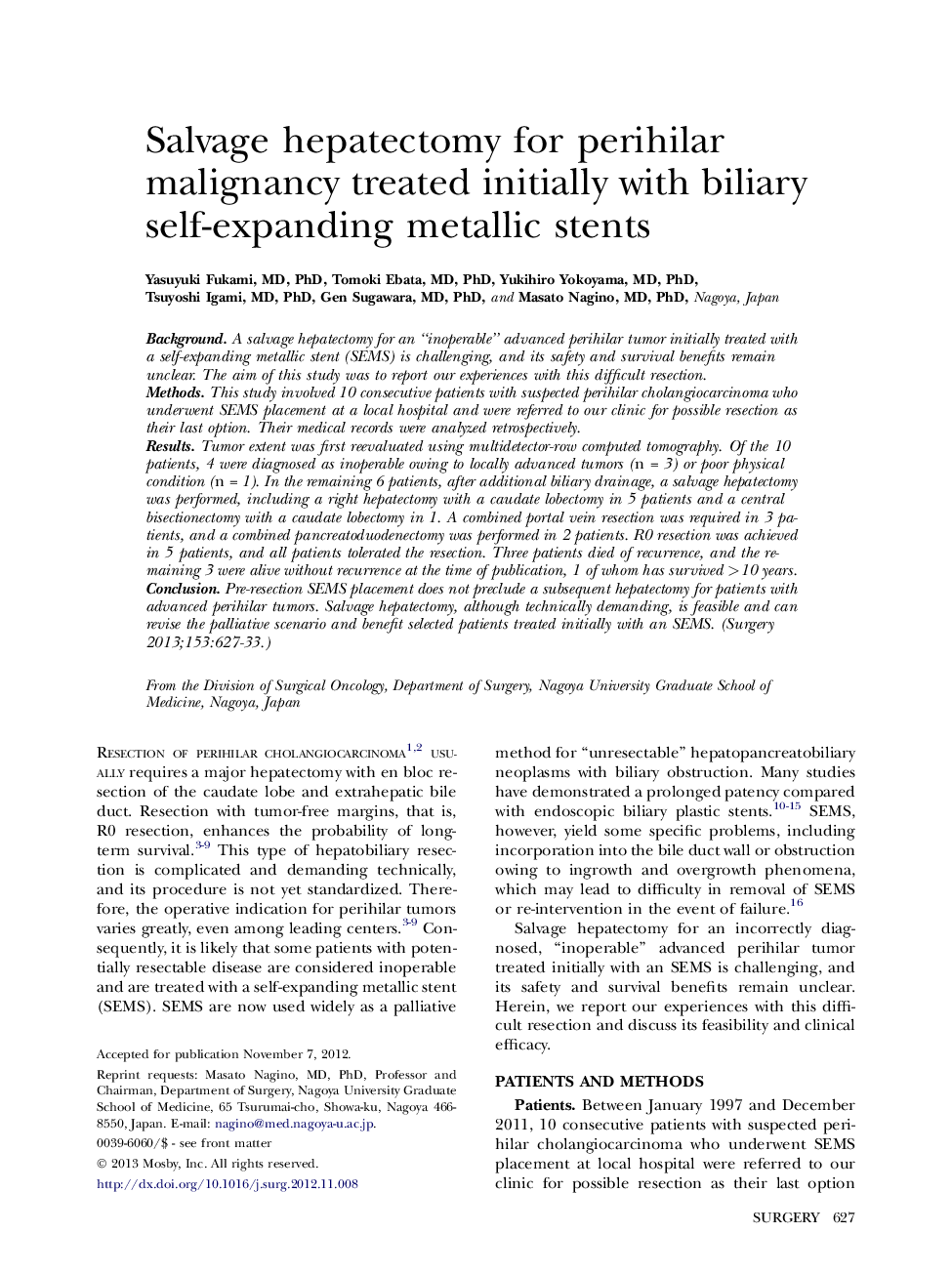| Article ID | Journal | Published Year | Pages | File Type |
|---|---|---|---|---|
| 4307092 | Surgery | 2013 | 7 Pages |
BackgroundA salvage hepatectomy for an “inoperable” advanced perihilar tumor initially treated with a self-expanding metallic stent (SEMS) is challenging, and its safety and survival benefits remain unclear. The aim of this study was to report our experiences with this difficult resection.MethodsThis study involved 10 consecutive patients with suspected perihilar cholangiocarcinoma who underwent SEMS placement at a local hospital and were referred to our clinic for possible resection as their last option. Their medical records were analyzed retrospectively.ResultsTumor extent was first reevaluated using multidetector-row computed tomography. Of the 10 patients, 4 were diagnosed as inoperable owing to locally advanced tumors (n = 3) or poor physical condition (n = 1). In the remaining 6 patients, after additional biliary drainage, a salvage hepatectomy was performed, including a right hepatectomy with a caudate lobectomy in 5 patients and a central bisectionectomy with a caudate lobectomy in 1. A combined portal vein resection was required in 3 patients, and a combined pancreatoduodenectomy was performed in 2 patients. R0 resection was achieved in 5 patients, and all patients tolerated the resection. Three patients died of recurrence, and the remaining 3 were alive without recurrence at the time of publication, 1 of whom has survived >10 years.ConclusionPre-resection SEMS placement does not preclude a subsequent hepatectomy for patients with advanced perihilar tumors. Salvage hepatectomy, although technically demanding, is feasible and can revise the palliative scenario and benefit selected patients treated initially with an SEMS.
